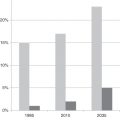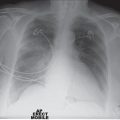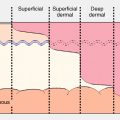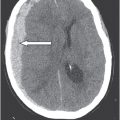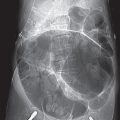Chapter 4
Vulnerable adults and elder abuse
Introduction
Elder abuse is common, serious, and under-reported. Abused older adults have a threefold increased risk of dying when compared to their non-abused counterparts. Despite this, many professionals working with older adults lack awareness of reporting guidelines and referral pathways (1).
This chapter will suggest a practical and structured approach to elder abuse, identify the different types of elder abuse, describe common presenting features to aid identification and provide structured guidance on the most direct way to report concerns about abuse.
Definition
The WHO defines elder abuse as ‘a single or repeated act, or lack of appropriate action, occurring within any relationship where there is an expectation of trust which causes harm or distress to an older person’ (2). Although self-neglect is not uniformly considered a type of elder abuse, it is the most commonly reported form of elder mistreatment in the United States.
Background
Elder abuse is considered under the umbrella term ‘family violence’ and can either be ‘domestic violence grown old’ or a phenomenon developing in later life due to changing circumstances of the abused or the abuser (3).
Who does it?
Ninety percent of abusers are known to their victims, the most common perpetrators being an adult child or a spouse (4).
Anybody can abuse an older adult.
What constitutes a ‘vulnerable adult’?
In England and Wales a vulnerable adult is defined as, ‘a person who is or may be in need of community care services by reason of mental or other disability, age or illness and who is or may be unable to take care of himself or herself, or unable to protect him or herself against significant harm or exploitation’ (5).
In Scotland, the 2007 Adult Support and Protection (Scotland) Act defines an adult at risk as
- Unable to safeguard their own well-being, property, rights or other interests,
- At risk of harm, and
- Due to being affected by disability, mental disorder, illness or physical or mental infirmity, they are more vulnerable to being harmed than adults who are not so affected.
In the United States, a vulnerable adult is defined as a person who is being mistreated or is in danger of mistreatment and who, due to age and/or disability, is unable to protect himself or herself (6).
Prevalence
The prevalence of elder abuse is hard to determine because the nature of the problem means it often occurs behind closed doors. It is also under-reported by both victims and health professionals. Adding to the challenge, studies that have attempted to estimate prevalence rates have been of variable quality, and have used different definitions and sampling methods. The National Elder Mistreatment study in the United States suggested that up to 11% of older people in the US had experienced some type of abuse in the previous year (7) and a large systematic review in 2008 reported a prevalence of 6% in general population, which is nearly double the reported prevalence rates 10 years previously (8). The prevalence of abuse in particularly vulnerable subgroups, such as people with dementia, is even more difficult to measure, but is suspected to be as high as 1 in 4 (8). All experts in the field agree that the documented prevalence of elder abuse underestimates the true magnitude of the problem.
Types of elder abuse
The United Kingdom recognises five main types of elder abuse; the United States also recognises these and has included a further two types of abuse, which are highlighted below (9, 10).
Physical
Inflicting, or threatening to inflict, physical pain or injury on a vulnerable elder, or depriving them of a basic need.
Psychological/emotional
Inflicting mental pain, anguish or distress on an elder person through verbal or non-verbal acts.
Financial/material
Illegal theft, misuse or concealment of funds, property or assets of a vulnerable elder.
Sexual
Non-consensual sexual contact of any kind, including coercing an elder to witness sexual behaviours.
Neglect
Refusal or failure by those responsible to provide food, shelter, healthcare or protection for a vulnerable elder. Neglect is not always intentional, many family members or carers are doing their best and have the best of intentions, but neglect in the context is still a form of abuse.
Self-neglect
A person’s refusal or failure to provide himself or herself with adequate food, water, clothing, shelter, personal hygiene, medication and safety precautions.
Abandonment
The desertion of a vulnerable elder by anyone who has assumed the responsibility for care or custody of that person.
History
Think about it
A key factor in identifying elder abuse is a high index of suspicion; clinicians will not see it if they have never been taught to consider it in the first place.
Ask about it
Patients are often reluctant to report abuse, and in the hospital setting, doctors may be less likely than nurses or other therapy staff to identify abuse, often because their interaction with patients is limited to briefer clinical encounters. Despite the difficulties identifying elder abuse, an initial encounter with an older patient still provides an important window of opportunity in which to consider and potentially identify signs of abuse. It is critical that clinicians create an opportunity to interview a vulnerable adult alone without family members or other potential perpetrators present.
The elder abuse suspicion index (EASI) takes approximately 2 minutes and is appropriate for use in the emergency department. It can be used in patients at high risk or if there are particular reasons to suspect elder abuse. It has been validated in primary and ambulatory care settings.
Examination
Physical examination
Stay updated, free articles. Join our Telegram channel

Full access? Get Clinical Tree



